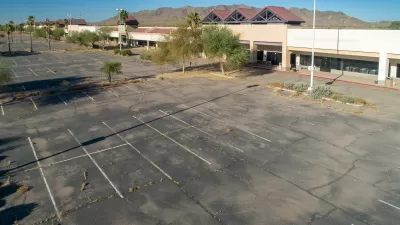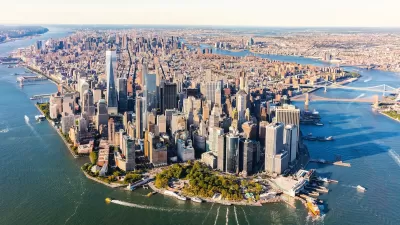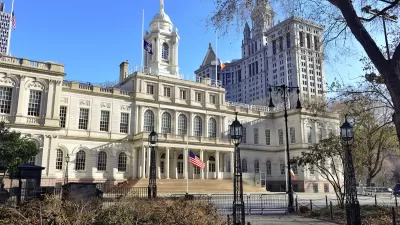The American strip mall may be a dying breed of commercial development, but could the buildings serve a new use as sustainable housing?

“Urban designer Peter Calthorpe has a plan for the shuttered and financially troubled strip malls that dot the suburban landscape: Convert the malls into housing that would be part of green communities where people could be closer to their jobs and get out of their cars.” As Jacques Leslie writes for Yale Environment 360, Calthorpe, in an interview, points out that “The idea of subdivisions for all was based on nuclear families, but now they represent just 24 percent of households in America. So we’re ready on many, many levels for more urban living — urban in the best, not the worst, sense.”
According to Calthorpe, “We’ve overbuilt single-family homes, and we need more multi-family housing. It turns out, especially now, after COVID, that strip commercial land is completely underutilized.”
“There is a large range of housing types that are appropriate, varying by site size, market, and construction costs. At the low-density end are live/work townhomes with small offices or flex space at the ground floor. Most common are “podium apartments” which have a concrete first floor containing parking and shops lining the streets with multi-story apartments or condos above. In areas well-served by transit, mid-rise buildings with ground floor shops and below-grade parking are possible.”
Calthorpe says that “If the strip commercial land in just the Bay Area and Los Angeles County were 100 percent redeveloped, that could provide 2.6 million units”—more than the estimated 2.5 million units California needs to eliminate its housing shortage.
Calthorpe acknowledges that housing production is “partly a zoning battle,” saying “local government is not a particularly advantageous place to argue for higher densities and infill. It needs state legislation enabling ‘as of right’ zoning [which overrides local obstacles such as design review boards].” Less restrictive zoning could pave the way for more innovative adaptive reuse, like the redevelopment of strip malls.
FULL STORY: How Ailing Strip Malls Could Be a Green Fix for U.S. Housing Crisis

Alabama: Trump Terminates Settlements for Black Communities Harmed By Raw Sewage
Trump deemed the landmark civil rights agreement “illegal DEI and environmental justice policy.”

Study: Maui’s Plan to Convert Vacation Rentals to Long-Term Housing Could Cause Nearly $1 Billion Economic Loss
The plan would reduce visitor accommodation by 25% resulting in 1,900 jobs lost.

Planetizen Federal Action Tracker
A weekly monitor of how Trump’s orders and actions are impacting planners and planning in America.

Wind Energy on the Rise Despite Federal Policy Reversal
The Trump administration is revoking federal support for renewable energy, but demand for new projects continues unabated.

Passengers Flock to Caltrain After Electrification
The new electric trains are running faster and more reliably, leading to strong ridership growth on the Bay Area rail system.

Texas Churches Rally Behind ‘Yes in God’s Back Yard’ Legislation
Religious leaders want the state to reduce zoning regulations to streamline leasing church-owned land to housing developers.
Urban Design for Planners 1: Software Tools
This six-course series explores essential urban design concepts using open source software and equips planners with the tools they need to participate fully in the urban design process.
Planning for Universal Design
Learn the tools for implementing Universal Design in planning regulations.
Caltrans
Smith Gee Studio
Institute for Housing and Urban Development Studies (IHS)
City of Grandview
Harvard GSD Executive Education
Toledo-Lucas County Plan Commissions
Salt Lake City
NYU Wagner Graduate School of Public Service





























